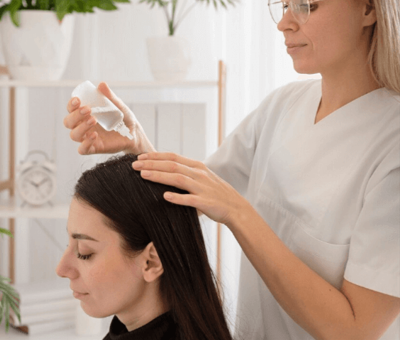Melasma is a persistent skin condition that causes brown or gray-brown patches to appear on the face—especially the cheeks, forehead, and upper lip. While topical treatments and sun protection are essential, laser therapy has emerged as one of the most effective clinical solutions for melasma, especially when performed by experienced dermatologists in South Korea.
With Korea’s globally recognized expertise in skincare technology, patients benefit from highly advanced, skin-type-tailored laser treatments that target melasma at its root. If you’re considering laser therapy for melasma in Korea, here’s everything you need to know before your first session.
✅ What Is Laser Therapy for Melasma?
Laser therapy involves the use of targeted light energy to break down excess melanin (pigment) in the skin. The goal is to:
- Reduce visible dark patches
- Stimulate skin regeneration
- Prevent recurrence through deeper dermal treatment
Laser therapy for melasma is non-invasive and typically performed in short outpatient sessions. The types of lasers used depend on your skin tone, the depth of your pigmentation, and your previous response to treatment.
🇰🇷 Why Korea Is a Top Destination for Laser Melasma Treatment
Korean dermatology clinics are leaders in:
- Advanced laser technologies
- AI-assisted skin assessments
- Personalized melasma treatment protocols
- Skin-safe, multi-layered therapy strategies
Korea’s approach to laser treatment emphasizes gentleness and gradual improvement, avoiding the over-aggressive tactics that can cause rebound pigmentation or worsen melasma in melanin-rich skin.
🔍 Types of Laser Therapies for Melasma in Korea
1. Pico Laser (Picosecond Laser)
One of the most popular options in Korea, Pico lasers (e.g., PicoSure, PicoWay) deliver ultra-short pulses of energy in trillionths of a second to break down pigment.
How It Works:
- Fragmentation of melanin without damaging surrounding skin
- Stimulates collagen to improve skin texture
Benefits:
- Less heat, reduced risk of inflammation
- Safe for Asian and darker skin types
- Minimal downtime (1–2 days of redness)
Common Korean Protocol:
- 5–7 sessions, 2–3 weeks apart
- Combined with skin brightening serums and recovery ampoules
2. Low-Fluence Q-Switched Nd:YAG Laser (Laser Toning)
This gentle laser delivers repeated low-energy pulses, gradually breaking down melanin over multiple sessions.
How It Works:
- Targets both epidermal and dermal pigment
- Reduces pigmentation slowly to prevent PIH (post-inflammatory hyperpigmentation)
Benefits:
- Safe for sensitive or darker skin tones
- No peeling, no crusting, no downtime
- Often paired with cooling masks or LED light therapy
Typical Korean Plan:
- 6–10 sessions, 1 session per week
- Used as a maintenance laser in long-term treatment
3. Fractional Lasers (e.g., Fraxel, CO2, Er:YAG)
More aggressive lasers used in cases of deep or stubborn dermal melasma. These lasers create controlled micro-injuries that stimulate healing and pigment renewal.
How It Works:
- Removes tiny columns of skin while leaving surrounding areas intact
- Triggers new skin growth and collagen formation
Benefits:
- Resurfaces skin
- Can treat textural issues along with melasma
- Long-term improvement after fewer sessions
Caution:
- Not suitable for all melasma types
- Requires longer downtime and sun protection post-treatment
🧬 New in 2026: AI-Driven Laser Customization in Korea
Korean clinics now offer AI-assisted imaging systems that:
- Analyze melanin depth and distribution
- Predict optimal wavelength, fluence, and pulse duration
- Track pigmentation response after each session
This tech-forward approach reduces guesswork and improves precision and safety, especially in patients with sensitive or darker skin.
💡 Combination Therapy: Lasers + More
In Korea, laser therapy is never used alone for melasma. It’s part of a holistic protocol that may include:
- Topical brightening agents: Tranexamic acid, kojic acid, niacinamide
- Oral supplements: Tranexamic acid, glutathione, vitamin C
- Hydro infusion therapy: Delivery of whitening and anti-inflammatory ingredients post-laser
- LED therapy: Red light to reduce inflammation and promote healing
🕒 What to Expect Before, During, and After Treatment
Before:
- Full skin evaluation
- Photos and melanin mapping
- Sunscreen routine prescribed
During:
- Short 15–30 minute session
- Mild tingling or snapping sensation
- Cooling or soothing mask afterward
After:
- Mild redness or swelling (usually resolves within 24–48 hours)
- No harsh peeling or crusting
- Daily SPF 50+ sunscreen and hydrating skincare recommended
⚠️ Important Considerations
- Consistency is key. Melasma is chronic, and multiple sessions are needed.
- Sun protection is non-negotiable. Even after laser treatment, UV exposure can reverse progress.
- Not all lasers are suitable for everyone. Your dermatologist in Korea will select the safest and most effective option for your skin type.
💰 Cost of Laser Therapy for Melasma in Korea (2026 Estimate)
Prices vary by clinic and technology, but here’s a rough estimate:
| Treatment Type | Price per Session (KRW) | USD Equivalent |
|---|---|---|
| Pico Laser | ₩250,000 – ₩450,000 | $190 – $340 |
| Laser Toning (Q-Switched) | ₩150,000 – ₩300,000 | $115 – $230 |
| Fractional Laser | ₩400,000 – ₩700,000 | $300 – $530 |
| Combination Packages | ₩1,500,000+ (5 sessions) | $1,100+ |
Many clinics offer discounted packages or foreign patient promotions.
🧴 Maintenance After Laser Therapy
To maintain your results:
- Apply SPF 50+ daily (reapply every 2–3 hours)
- Avoid saunas, intense exercise, and hot environments post-treatment
- Use pigment-regulating skincare (as prescribed)
- Return for maintenance laser toning every 1–2 months, if needed
Final Thoughts
Laser therapy is a powerful, dermatologist-supervised solution for treating melasma—especially when performed in Korea, where medical technology and skin-specific protocols are ahead of global trends. By combining laser precision with Korean skincare philosophy, patients can enjoy gradual, natural, and long-lasting improvements in pigmentation.
If you’re dealing with stubborn melasma and want to explore high-tech, skin-safe options, a visit to a Korean dermatology clinic may be your best investment in clear skin.




